Sir Frederick Gibberd was an English architect, landscape designer and town planner. His design for Harlow New Town, generally regarded as the most successful of Britain’s post-WWII developments, is his greatest achievement. His garden is his most personal.
Located in Essex on the outskirts of the town he designed, the garden is little known and little visited, despite being called by BBC Gardeners’ World one of the most important post-war gardens in the country.
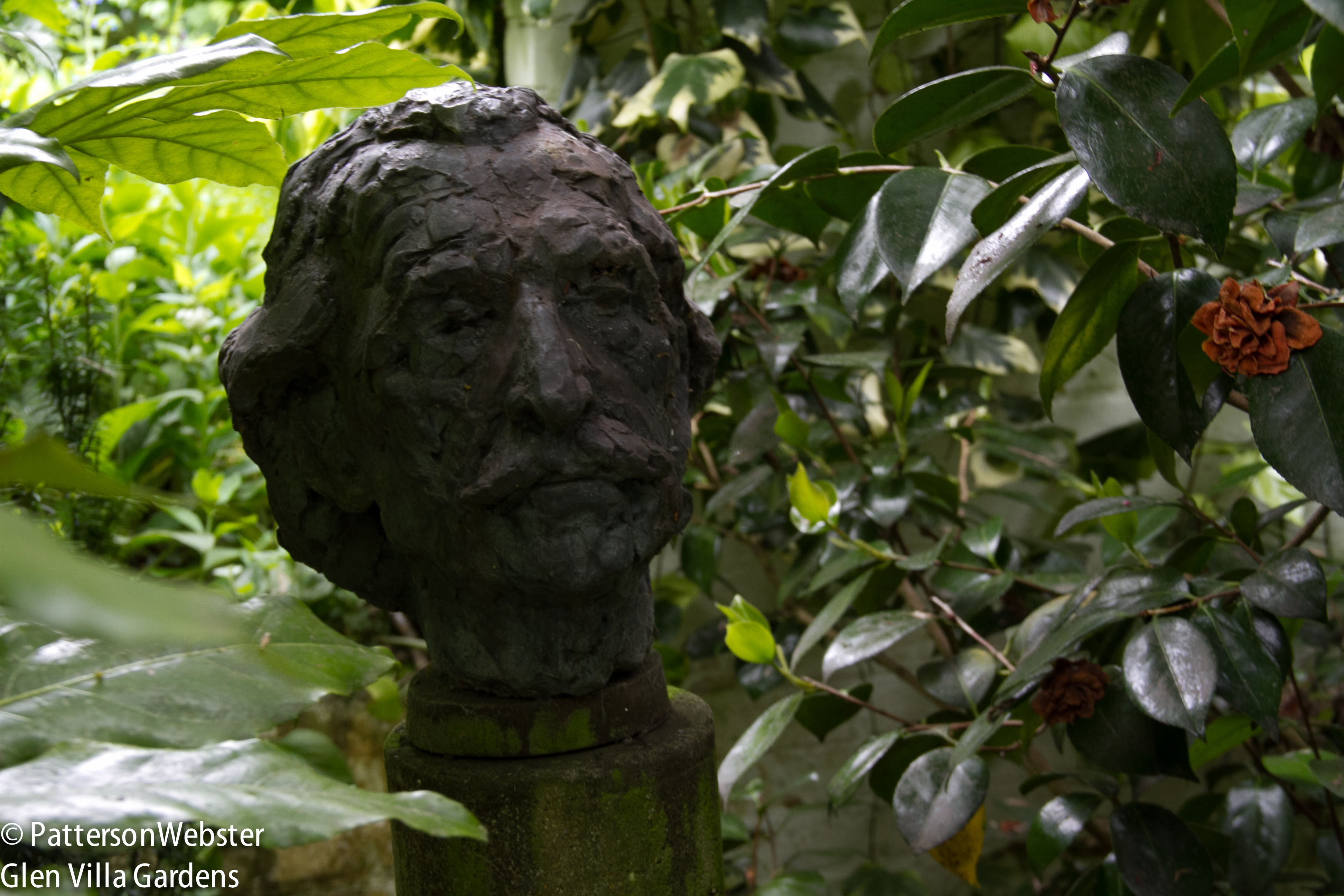
A bust of Gibberd by Gerda Rubinstein is viewed comfortably through a window of the house.
The garden is a highly individual creation. Full of modernist and avant-garde sculpture, art objects and architectural salvage, it is theatre as much as garden, with moods that swing from dramatic to comic, sentimental to cerebral. Rather oddly for an architect, Gibberd designed his garden without a master plan, instead placing the sculptures according to the way they felt in the space.
Undoubtedly the most dramatic feature is the scene created from columns salvaged from the old Coutts Bank on the Strand in London, which Gibberd redesigned. When I came upon the columns, I gasped. Despite knowing they were there, the effect was startlingly effective.
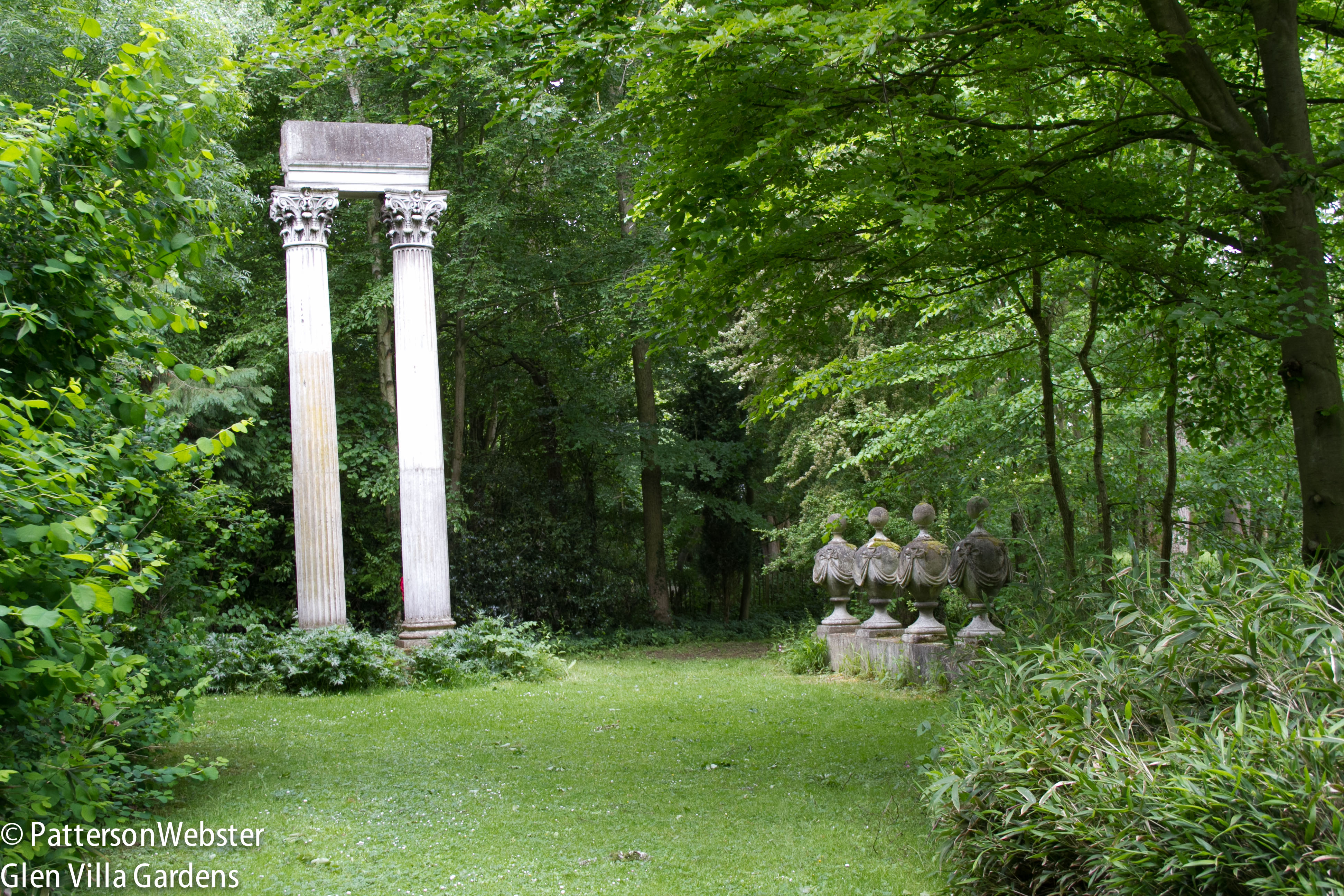
Corinthian Columns are topped by stylized acanthus leaves. Planting the real thing at the base of the columns is a nice touch.
The garden as a whole has a melancholy air. It feels well-loved but slightly decrepit, like a stage set that has been used for more performances than anyone can remember. The atmosphere reminded me of other theatrical 18th century gardens — Rousham, for instance, or Castle Howard, albeit on a much smaller scale.
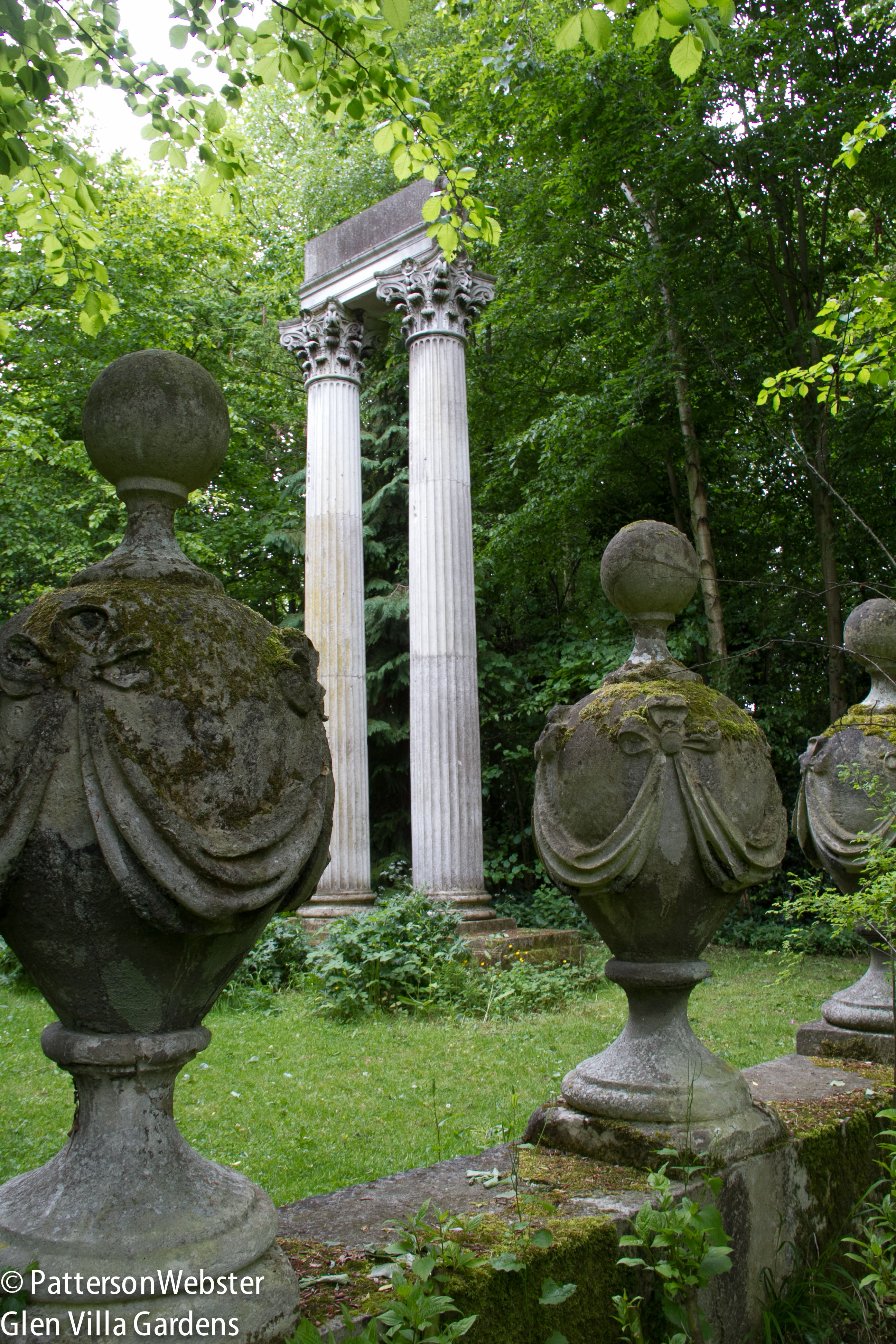
The urns also came from the façade of the Coutts Bank in London.
But even at its most theatrical and melancholic, touches of humour are there to be found.
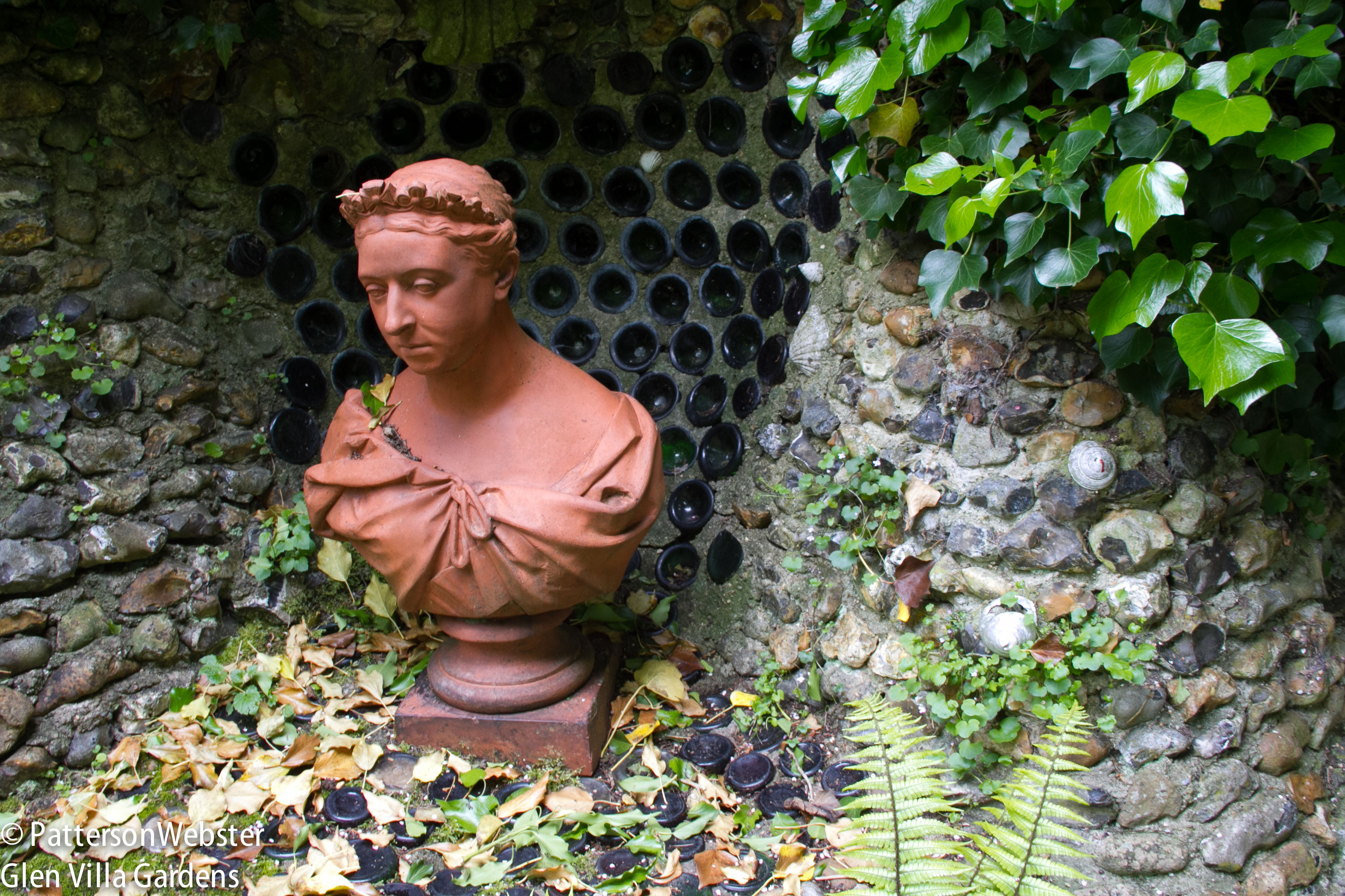
A terracotta bust of Queen Victoria is the centrepiece of a quirky grotto. The backdrop is formed from bottles inserted into cement. Seeing it made me wonder if the pensive matron was still mourning the death of Prince Albert.
The lightest touch is at the far end of the garden, where Gibberd built a moated castle, complete with drawbridge, for his grandchildren. Nearby a wide-seated swing dangles on long ropes from the branches of a tree, hinting at romantic encounters with girls as careless and hedonistic as any painted by Fragonard.
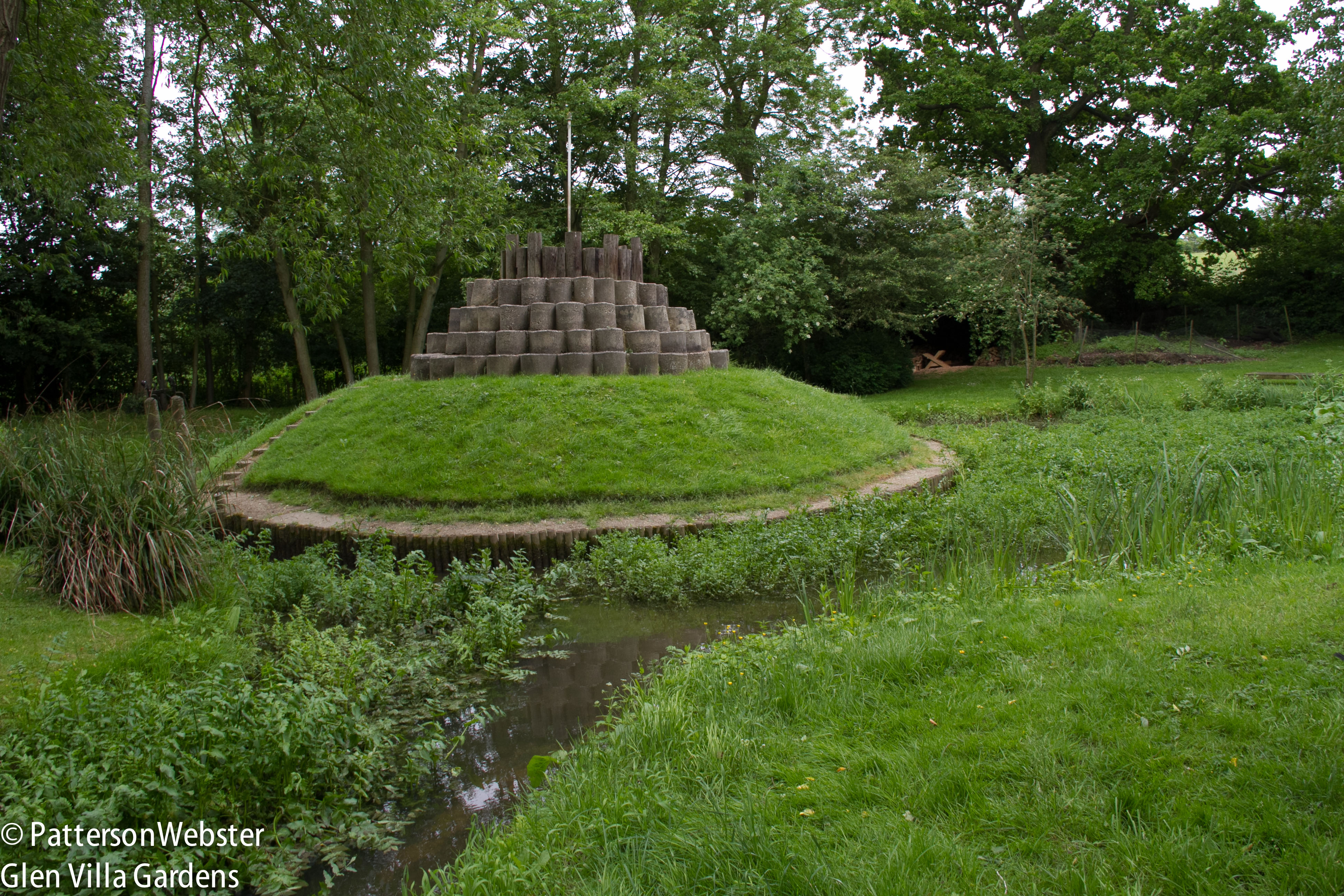
No flag was flying over the castle the day I visited, and the drawbridge wasn’t working. Still, a moated castle makes as perfect a playground now as it did for Gibberd’s grandchildren.
Some garden features were in place when Gibberd purchased the property in 1955. These include the formal pool and pavilion near the house …
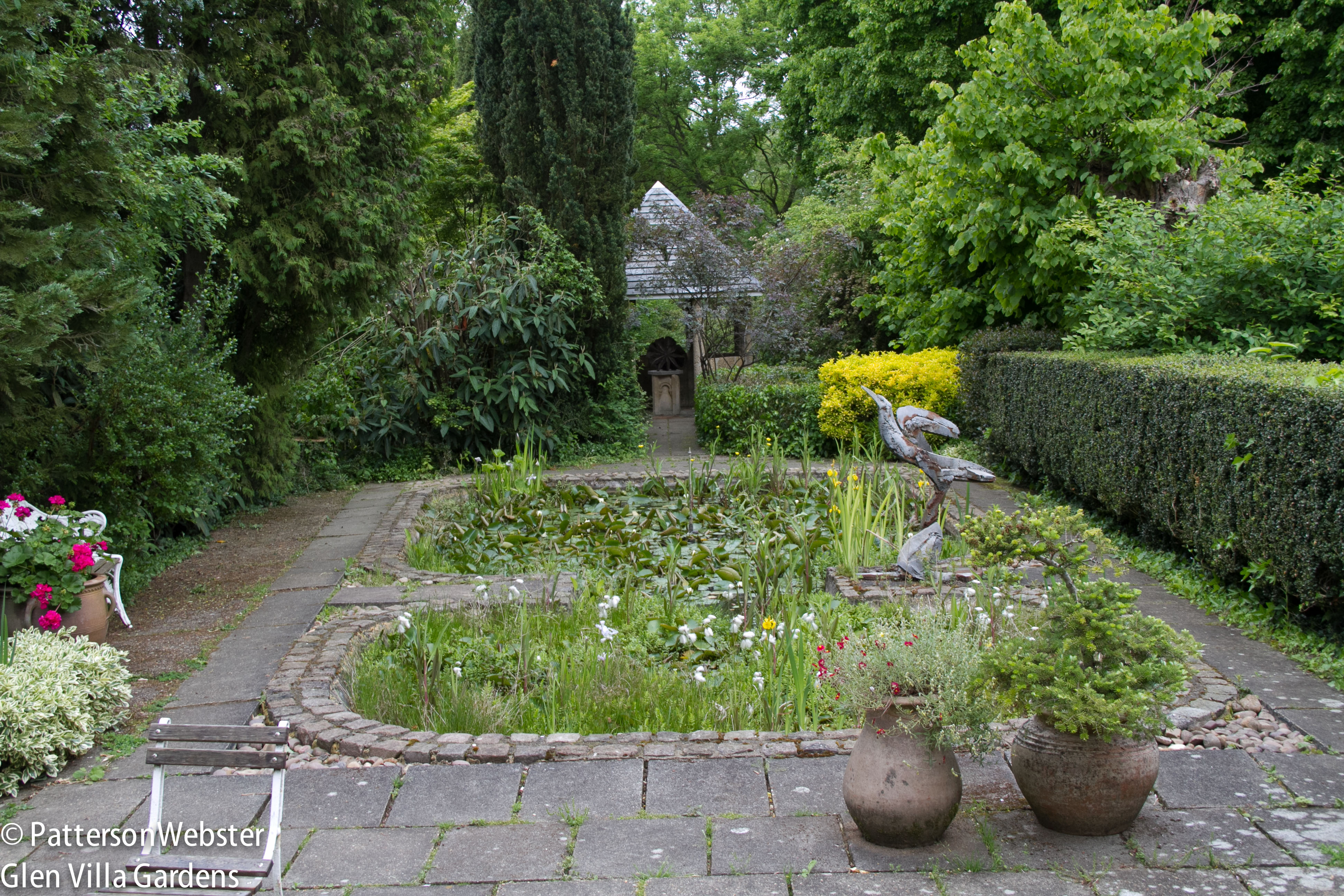
The garden is maintained primarily by volunteers which gives it a comfortable lived-in feeling. I’d like the pool better if some of the plants were removed.
and a strikingly dramatic line of lime trees.
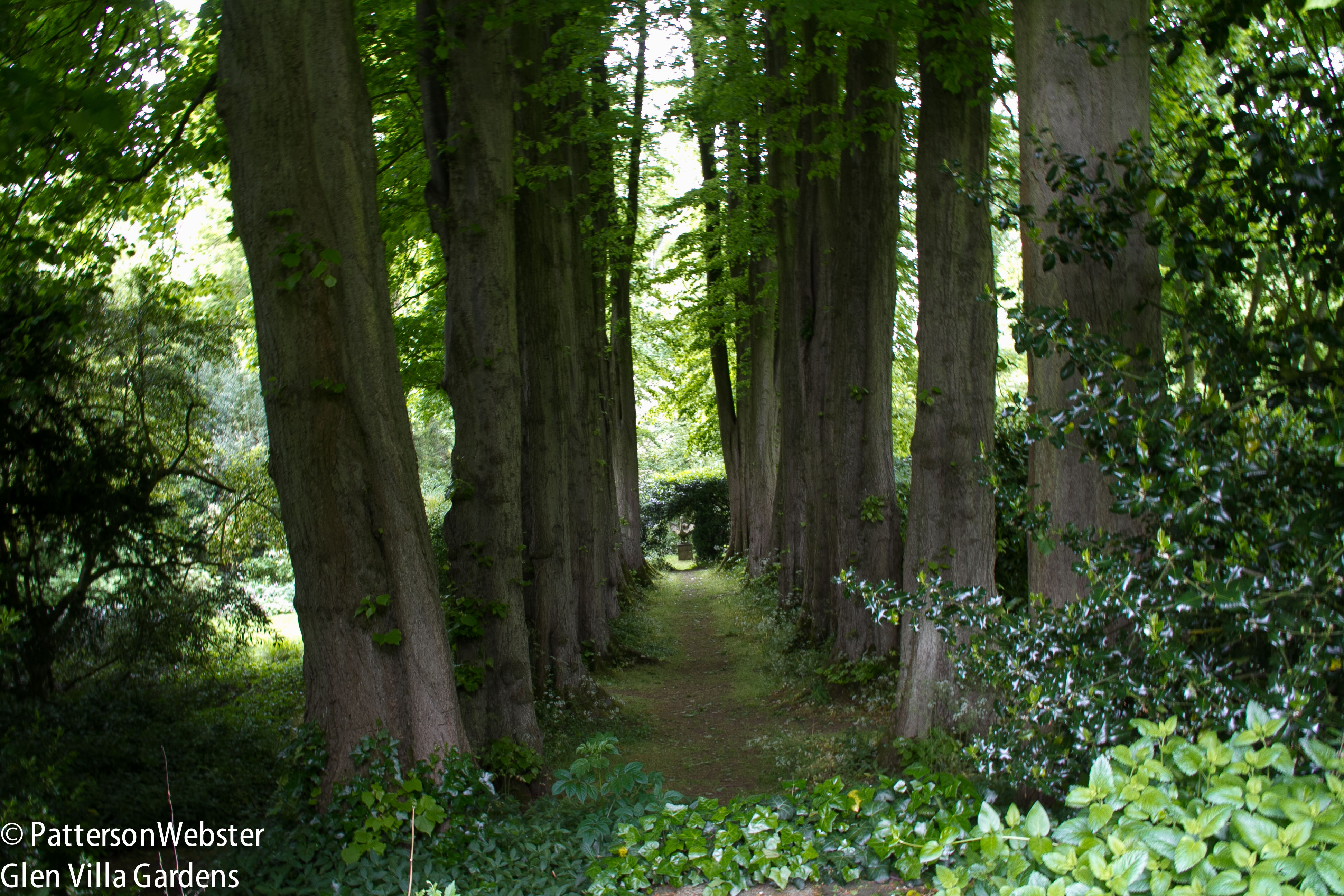
Seen from a distance, the opening into the lime walk appears mysterious, like an opening into the underworld.
Less successful in my mind is the narrow bit of lawn that takes visitors to the house. The geometry that characterized the period remains, and while it is softened by sculptures arranged like actors, this stage set feels crowded, without a central star.
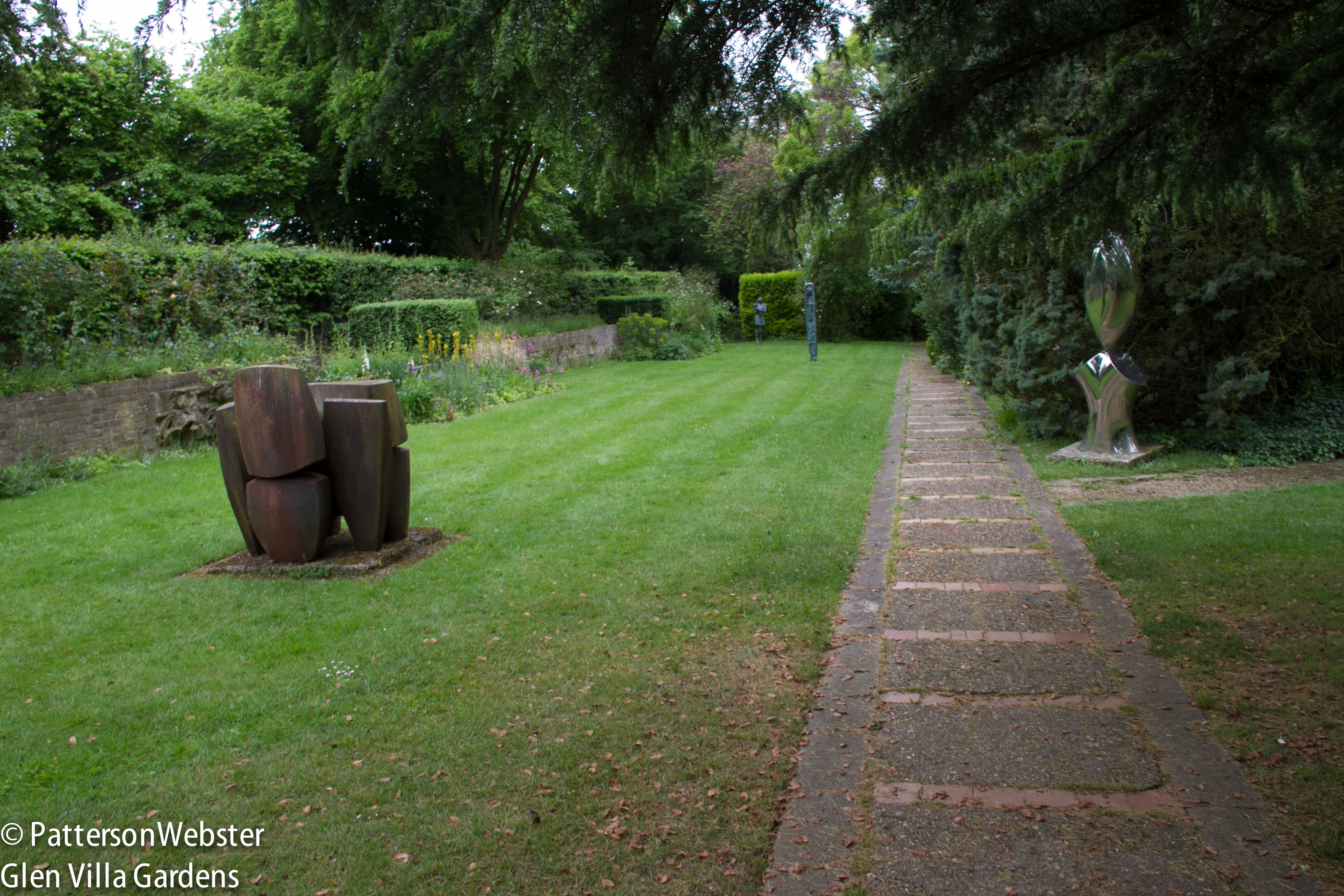
The sculpture in this area includes a Mother and Child by Gerda Rubinstein. The square blocky piece in the foreground is Interlock, by Paul Mount. On the right is a stainless steel piece by Antanas Brazdys.
The garden is divided into spaces most easily described as rooms. But they aren’t the type of rooms found at Hidcote or Sissighurst, where spaces are separated one from another by tall hedges. At the Gibberd Garden, the rooms flow and interact to create spaces that feel very different while still remaining part of an integrated whole.
Gibberd considered himself an intuitive gardener. If something worked, fine; if it didn’t, he ripped it out and tried something else. He placed sculptures more deliberately. Near the house they are arranged in clusters.
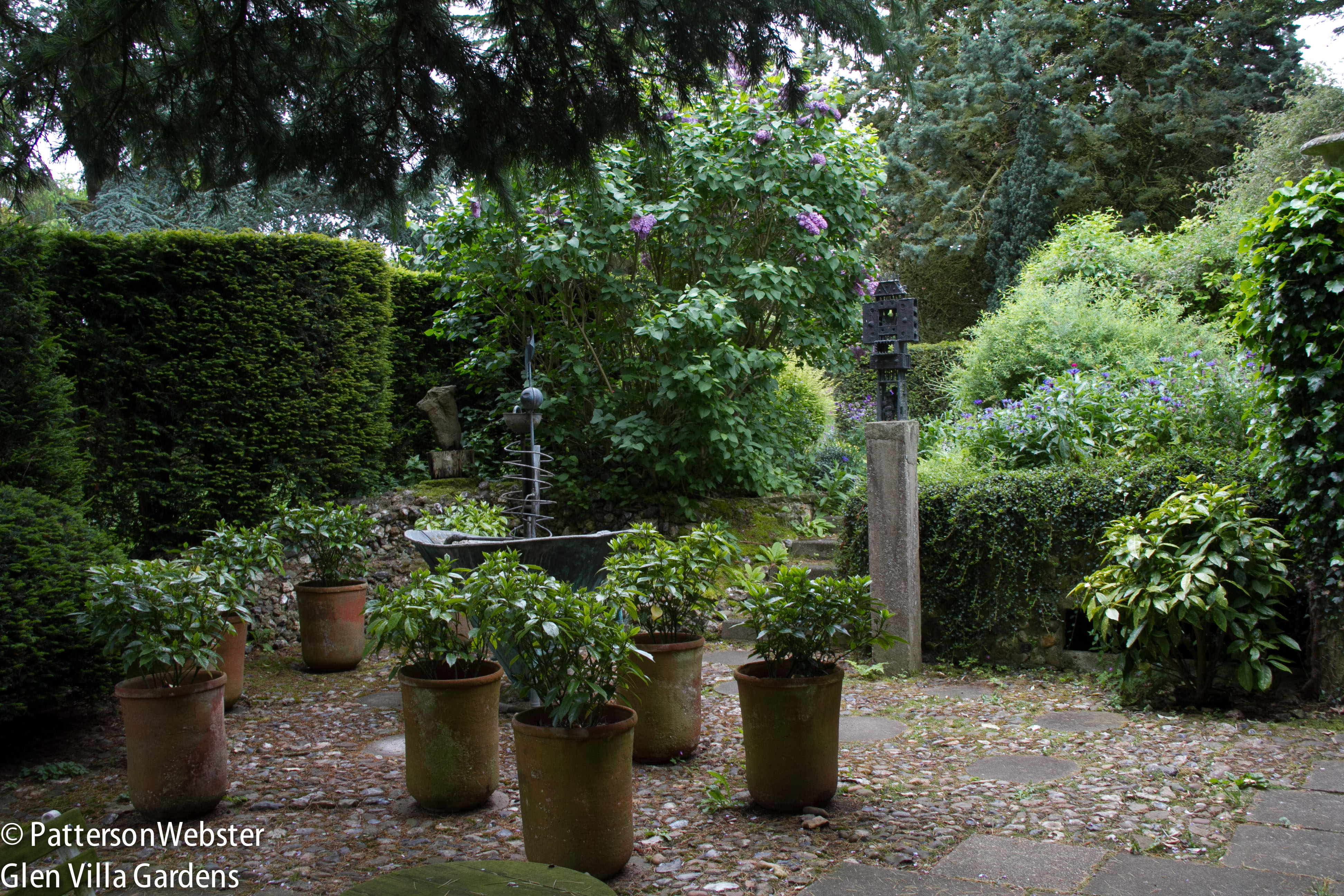
The arrangement of the pots on a terrace is particularly effective, providing structure without being strictly geometric.
As you move away from the house, they are placed farther apart, with sight lines that offer multiple views.
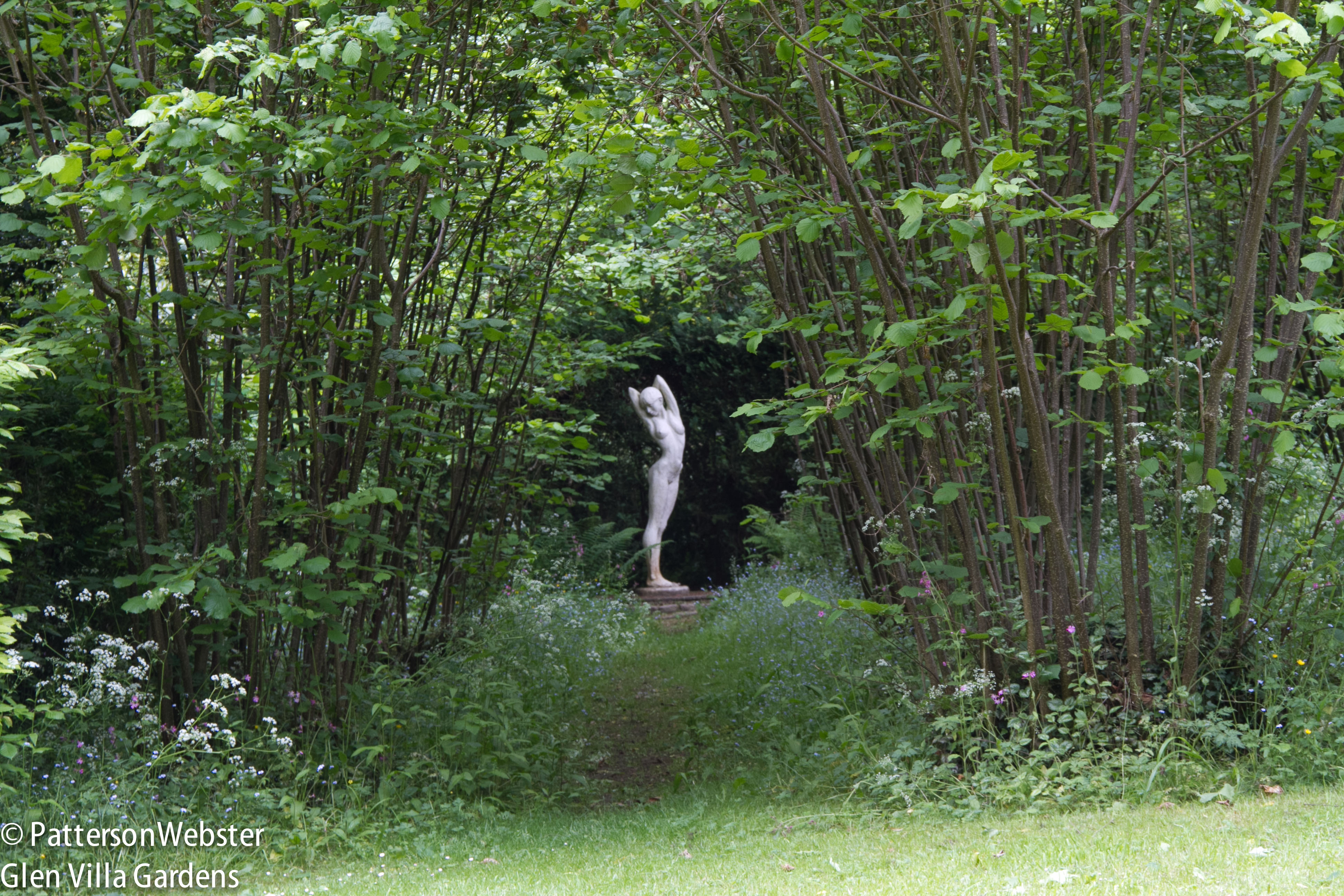
This leading lady is surrounded by a bamboo grove that directs the eye as strongly as any spotlight.
Some of the best actors in the garden are the trees. They are magnificent, whether they tower over a rustic piece of art …
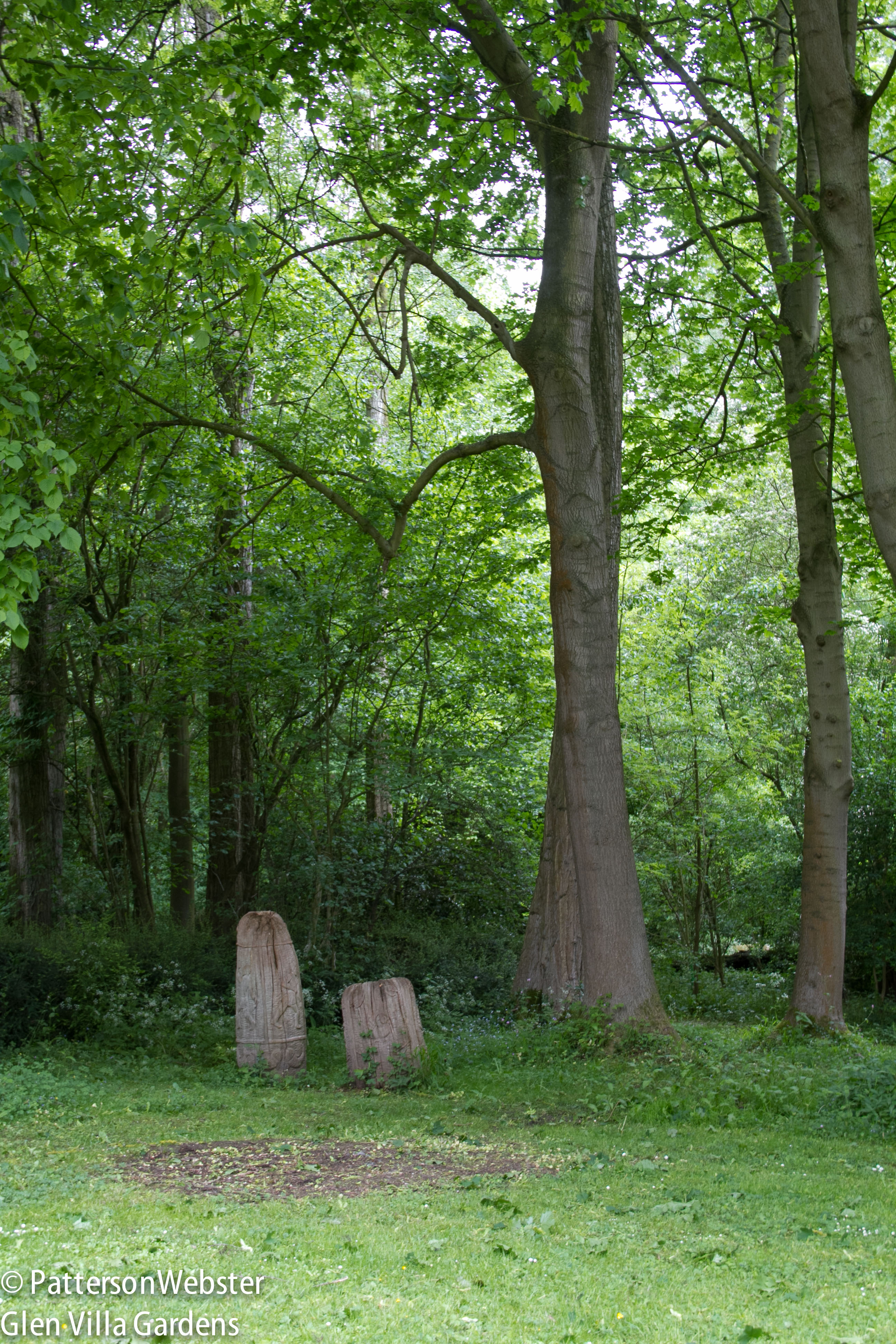
The wooden totems mirror the colour of the tree trunks. They are by Robert Koenig.
or stand alone …
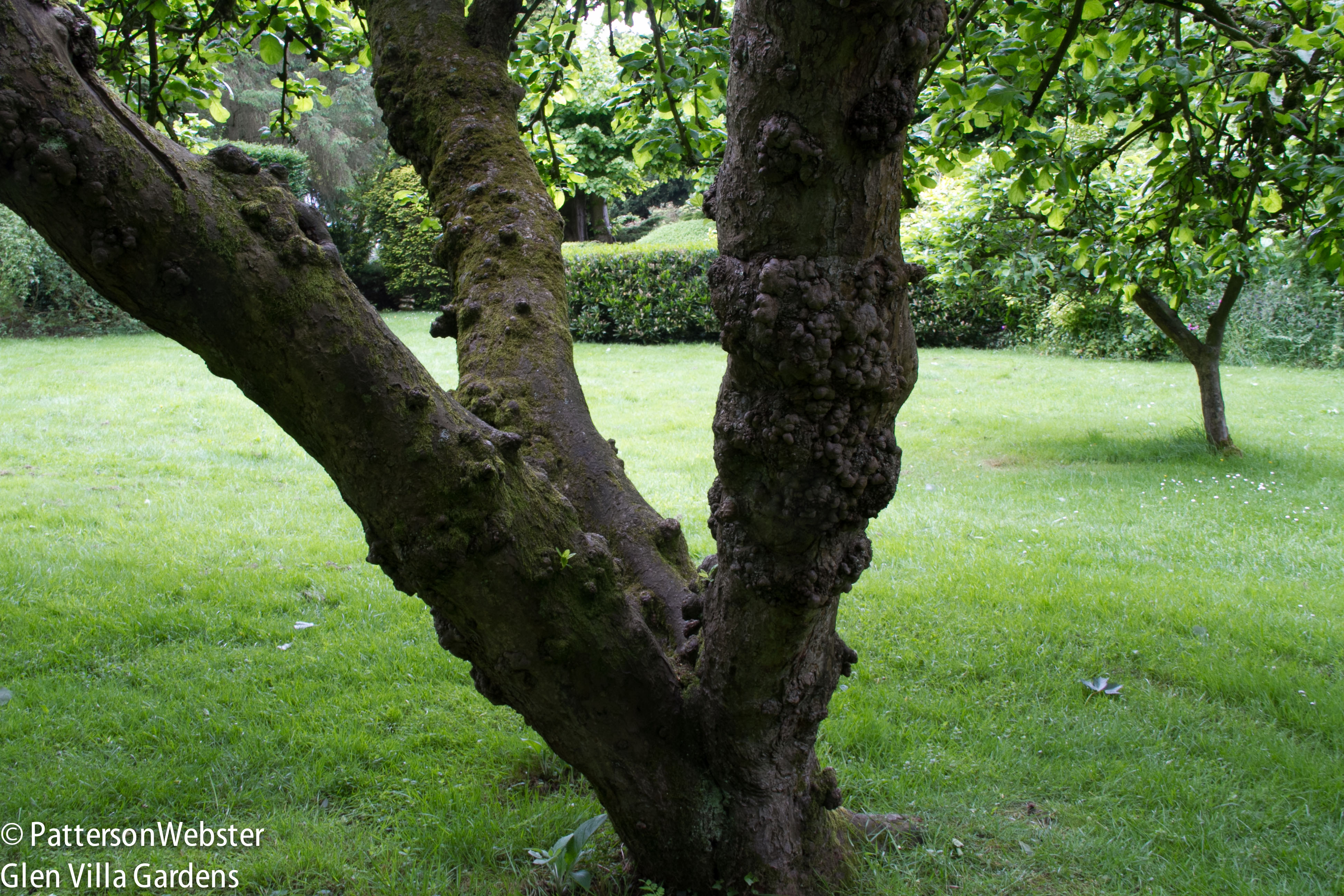
A warty apple tree stands on its mark on a section of open lawn.
or provide a welcome touch of colour.
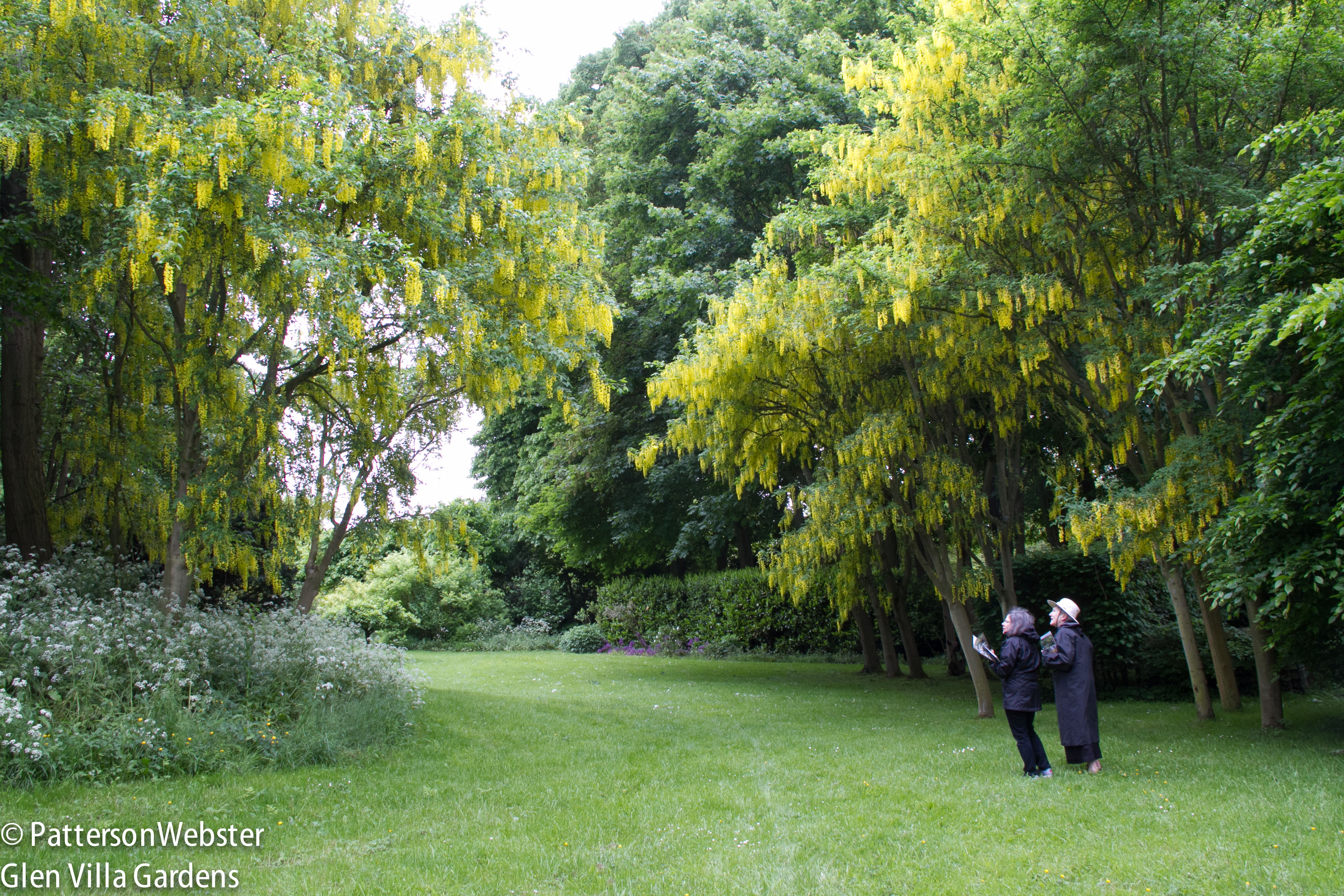
Laburnum trees dwarf the real actors, busy taking photos of the trees.
The garden runs downhill to a brook that was muddy when I saw it, the result of heavy rains that fell the night before. Even so, it was another highly romantic scene, and one I was able to admire at length thanks to a well-placed bench.
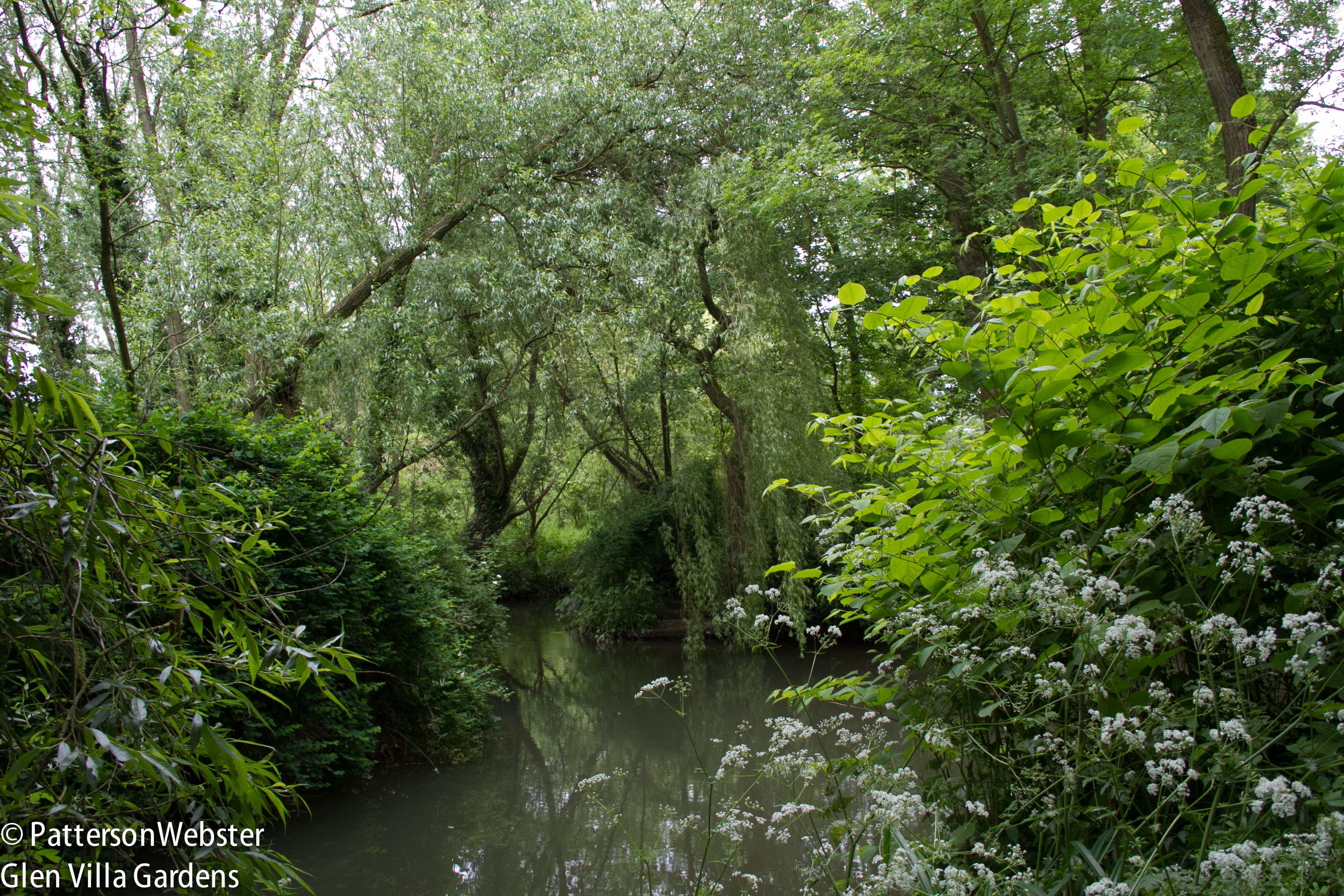
The down-at-heels atmosphere was strongest in this part of the garden.
Some years ago, a lawsuit threatened the future of the garden. Thanks to an appeal launched by Hugh Johnson and a successful application to the National Lottery, the garden’s future is now secure. The house and garden are Grade II listed and the house is open to the public. Restored as far as possible, the rooms are filled with much of the original 1960s Scandinavian furniture. The art that once hung on the walls, made by Gibberd’s friends and contemporaries like Henry Moore, Paul Nash, John Piper and Elizabeth Frink, is long gone, auctioned to pay the costs incurred by the lawsuit, but the presence of the designer lingers like stale pipe smoke.
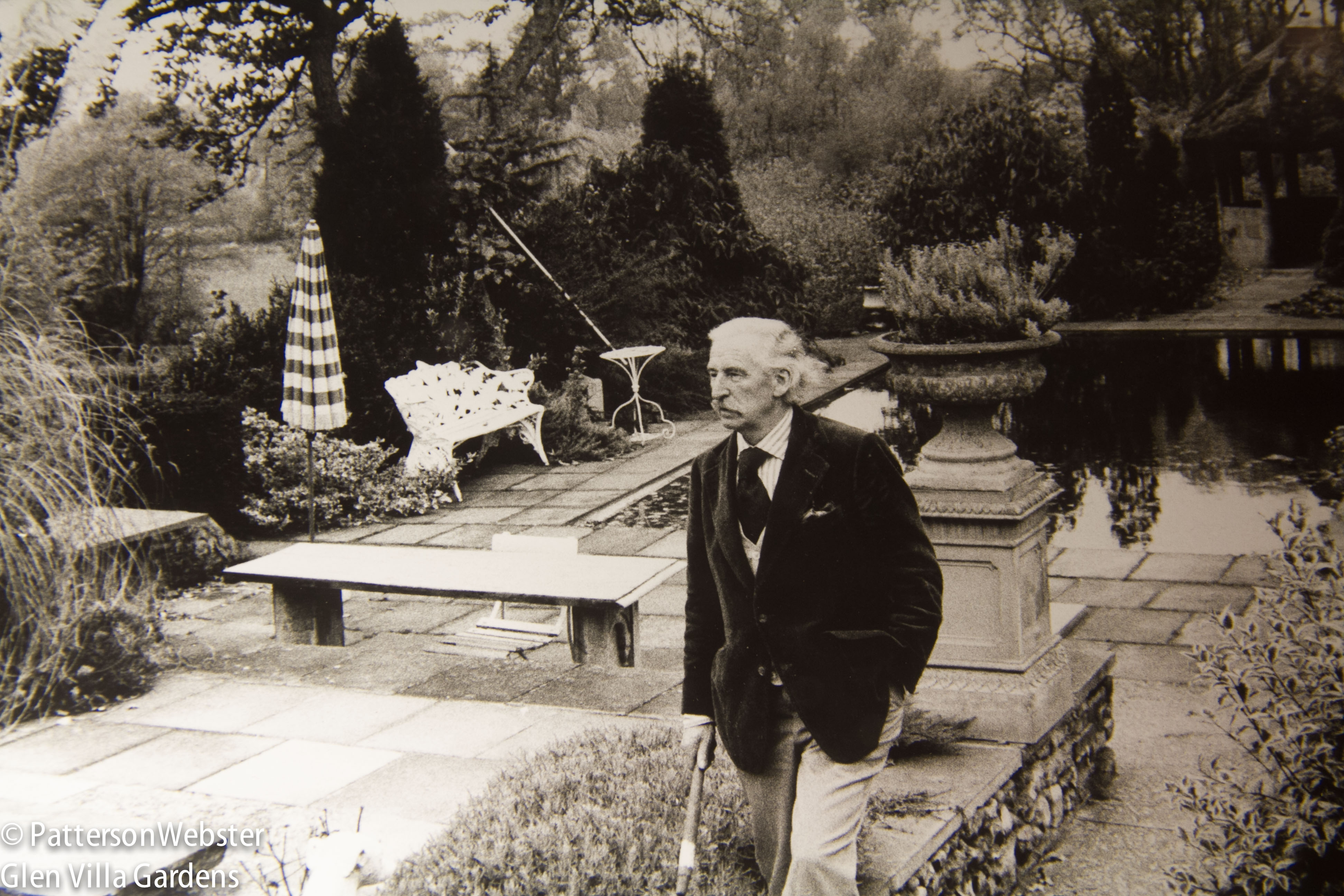
A photo of Sir Frederick shows him standing next to the formal pool near the house. He was called Freddy as a child but he doesn’t look like a Freddy to me — he seems much too debonair.
The house and garden are open on a regular basis. Both are well worth a visit.






Maybe it’s because I’m tired, but in the first picture of those columns, the urns looked like busts of ancient Roman generals about to parade through the triumphal arch. Also, I note in the final photo of Sir Frederick by the formal pool, that the pool is *not* choked with plants! And re: your comment about it being odd for an architect to design his garden without a master plan–maybe he needed a release from being so structured. Perhaps the garden was the only place he could give his “left brain” free reign, where he could play instead of work. I am glad he had a castle for his grandchildren. That make him seem human. Maybe he played with them there?
Kathy, I scrolled back to look at that photo again, and i see exactly what you mean. Gave me a good chuckle. Plant-choked pools lose so much of their appeal when the water can’t reflect the sky and the surroundings. I’m not sure why they haven’t cleared more of the vegetation … maybe simply a shortage of hands and time.
Strange the way people will let pools lose their reflections and luminosity. Memorable, and atmospheric then? Refreshingly green…alas quite a way from here. A garden I would love to visit.
It is a very atmospheric place. I hope to return next year when I bring another group to gardens in and around London. No Chelsea Flower Show next year, though — it is an extraordinary experience that I hope in future to avoid entirely.
Enjoyed this! https://journals.lib.unb.ca/index.php/mcr/article/view/18087/19412
Thanks for this link, Robert. Very interesting to follow up.
That moat and castle would be brilliant in a public playground.
I agree. I wish I knew more about the grandchildren… it’s easy to imagine a bunch of them raising and lowering the drawbridge, and attackers with pirate swords.